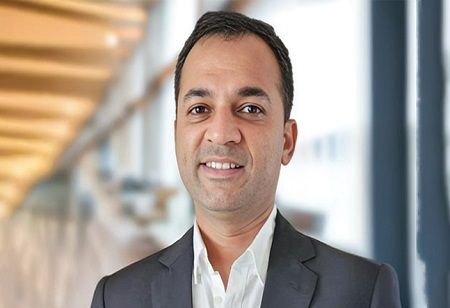Sarvesh Mutha, Managing Director, IntegriMedical

Sarvesh Mutha, Managing Director, IntegriMedical in a recent interaction with India Pharma Outlook magazine shares his views on how needle-free injection technology is gaining traction in India amid rising vaccine hesitancy and pain-related fear and how this innovation is reshaping vaccination adoption and accessibility, how the cost of needle-free injection systems compare to traditional syringes in India and more.
Needle-free injection technology is gaining traction in India amid rising vaccine hesitancy and pain-related fear. How this innovation is reshaping vaccination adoption and accessibility?
This technology offers a cutting-edge technique to deliver injections without the use of a needle. As a mainly non-invasive option, it solves many of the common concerns patients associate with a needle-based injection. In general, vaccinations have the potential to elicit a stressful experience for patients because of the very nature associated with needle-based injections, such as needle-phobia, risk of needle-stick injury, and fear of pain.
The difference with this technology is that it is almost painless and eliminates stress associated with an injection, especially for those who have needle-phobia. This will increase willingness of vaccination, which is why it is now starting to gain a greater reputation in India.
How does the cost of needle-free injection systems compare to traditional syringes in India? Are affordability concerns limiting large-scale adoption in public health programs?
The technology was officially launched in India about nine to ten months ago (after their initial soft launch that was meant to gauge expectations from the market and user needs). At this point, the technology is still more expensive than syringes. However, the long-term benefits which include patients being better at adhering to a treatment regimen and fewer needle-stick injuries. It may be more expensive upon initiation, but it has much greater long-term benefits. At this time, the technology is mainly being deployed in metro cities, and tier-one and tier-two cities but is quickly being deployed in small towns and rural areas.
Furthermore, we are actively pursuing partnerships with governmental agencies, healthcare organizations, and foundations to incorporate this innovation into public health initiatives and vaccination campaigns, making it much more widely accessible. In reference to pricing, we should note that even now the cost is reasonably low- notably in the lower hundreds (of a currency) rather than thousands. We will continue to work towards decreasing the cost as adoption ramps up and production runs increase significantly.
Needle-free injectors promise precise drug delivery, but how do they ensure uniform dosage across different patient demographics, especially in pediatric and geriatric populations?
This technology has been around for a period of time. However, we have improved and shaped it more broadly for different demographics. We have now launched the device successfully in the pediatric space with more than 1,000 doctors using it both in India and Europe. Currently, more than 50,000 patients have been vaccinated using this technology, which shows early acceptance and effectiveness. We conducted extensive clinical trials, across different ages with pediatric and geriatric populations, in which safety, acceptability, and tolerability along with immunogenicity, efficacy in those aged 9 months to 55 years and older.
In particular, we have conducted clinical trials to investigate the immunogenicity and safety of Covishield in the cohort of individuals aged 55 and above. In all trials, we showed consistent findings where the device had similar or better immunogenicity than standard needles, with high levels of safety and patient comfort. The successful commercialization of this technology in Europe and India, specifically the pediatric market, is robust proof of its efficacy, safety, and ability to be used in various demographics.
Compared to traditional needles, how do needle-free systems impact vaccine wastage, sterility, and overall logistics efficiency in large-scale immunization drives?
When considering the elements of vaccine waste, sterility and overall logistics efficiency: Regarding sterility, there is no compromise with our needle-free cartridges and system as N-FIS is non-invasive and new sterile cartridges are used for every injection. This allows us to maintain a consistent and high level of patient safety. In terms of logistics efficiency, the initial kit is a one-time distribution effort. The device itself is highly durable, typically supporting around 10,000 uses, with the potential to reach up to 15,000 to 20,000 uses.
During large-scale immunization initiatives, the increased durability addresses many logistical issues and operating costs associated with conventional approaches that rely on continuous replenishment of syringes and needles. Safely disposing of needles often requires the use of designated containers followed by a logistics process that includes the safe disposal of the sharps through proper handling and incineration. Used cartridges can be disposed with normal plastic waste, while used needles require a significantly more cumbersome and expensive procedure to dispose of, making needle-free technology highly suitable for large-scale immunizations.
In terms of waste, research in the general area of needle-free technology has shown that smaller amounts of vaccine doses have been successful under needle-free administration in some instances. Although we are aware that this is the case, we have not done specific clinical research with our device to conclude that vaccine doses can be reduced. However, at this time, based on device use, there is no evidence that waste will increase with this technology. Additionally, our system delivers the full recommended dose without any wastage, unlike traditional needle and syringe methods, where a portion of the vaccine potentially remains in the needle and syringe. Likewise, reducing dose amounts is not out of the realm of possibility, but the usage of vaccines and waste is consistent with standard practices that have been done regarding traditional needles.
Also, by using our needle-free system, needle-stick injuries - and the risk and costs involved - are altogether removed, therefore increasing safety and operational efficiency even more.